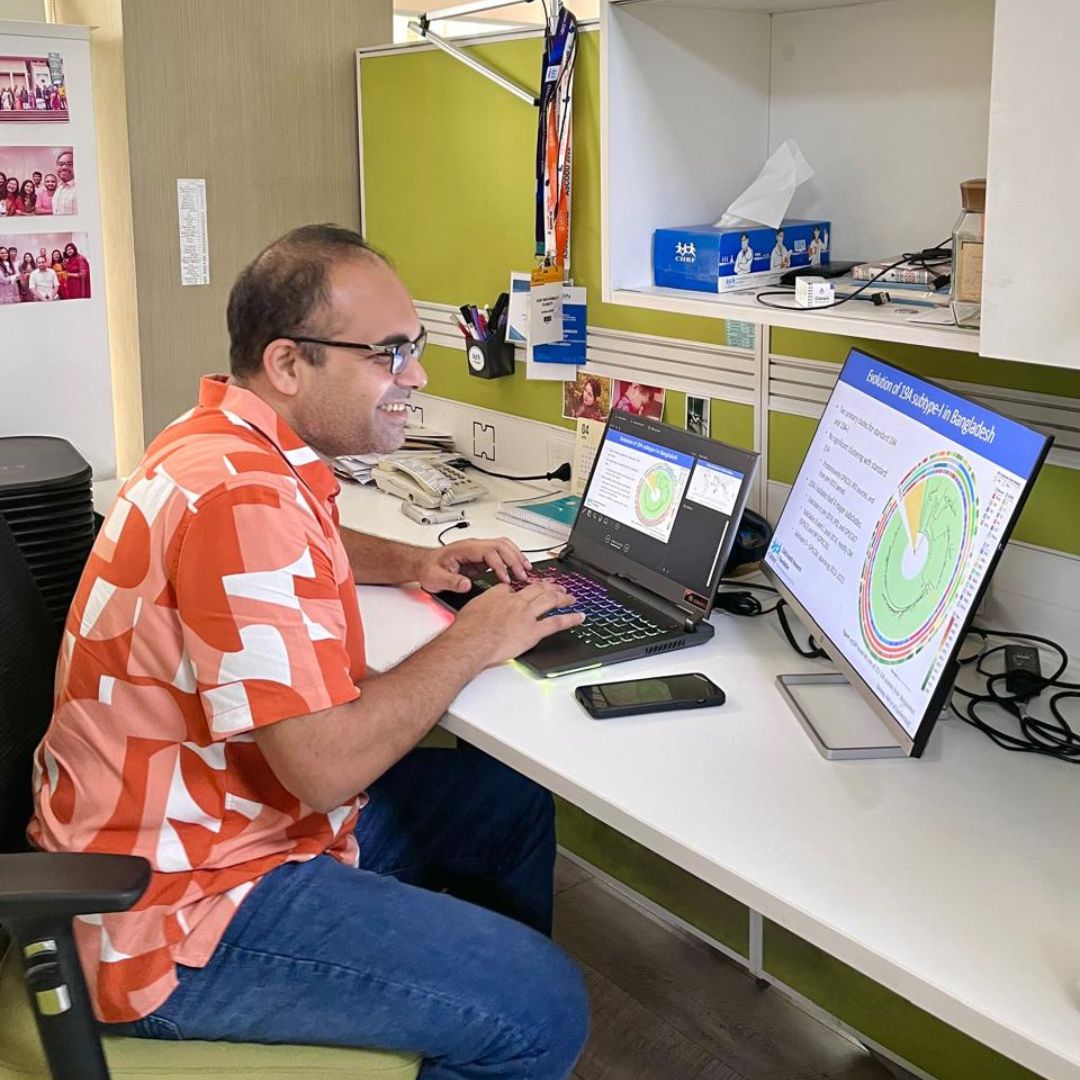
The Global Pneumococcal Sequencing (GPS) Project is a worldwide partnership led by the Wellcome Sanger Institute, together with the US Centers for Disease Control and Prevention (CDC). It is supported by the Bill & Melinda Gates Foundation and the Wellcome Trust. GPS brings together scientists from over 50 countries to generate high-quality whole genome sequence (WGS) data on Streptococcus pneumoniae (also known as Pneumococcus), and analyze to track dynamics of different serotypes and GPSCs. The project also studies how Pneumococcal Conjugate Vaccines (PCVs) are changing the pneumococcal population around the world. This helps countries better control pneumococcal disease and informs vaccine design.
At the heart of GPS is open, real-time data sharing. All genome sequences and related data are stored in a public database. This allows researchers and policymakers to monitor new pneumococcal serotypes and antimicrobial (AMR) patterns. GPS also strengthens capacity in local laboratories through training workshops and bioinformatics support. This helps countries affected by pneumococcal disease to contribute data and use this information to improve vaccine policies.
Amplifying Bangladesh’s Impact on Global Health
Bangladesh has one of the highest burdens of invasive pneumococcal disease and plays an important role in the GPS project. At the most recent seminar, CHRF presented our long-term genomic pneumococcal surveillance data. This dataset includes isolates from blood, cerebrospinal fluid (CSF), nasopharyngeal carriage (NP), otitis media (OM) samples, collected between 2004 and 2023. Dr. Arif M. Tanmoy discussed the changes in serotype 19A subtypes before and after the introduction of the PCV10 vaccine. He explained how this locally generated data helps to guide vaccine discussions.
A Journey into Serotype 19A
Dr. Tanmoy’s presentation focused on Streptococcus pneumoniae serotype 19A, a strain that has become a growing concern worldwide due to its high antibiotic resistance.
This research is not just a scientific inquiry — it represents decades of work that began in 1989 with Dr. Samir K. Saha at Bangladesh Shishu Hospital and Institute, Bangladesh’s oldest children's hospital.In the years since, the CHRF research team has closely tracked how pneumococcal strains, particularly serotype 19A, have evolved. Based on CHRF’s epidemiological data that showed low burden of 19A in the country, Bangladesh introduced PCV10 in 2015, which did not provide protection for serotype 19A. There were concerns that multidrug resistant (MDR) 19A strains may take over and Bangladesh would require more expensive PCV’s.
Surprising Findings in Bangladesh
While countries like Brazil, Japan, and the USA saw an increase in MDR 19A-related invasive disease following the introduction of PCV7 or PCV10, our data shows that Bangladesh followed a different path. Our analysis of 2010-2023 data showed that the incidence of 19A actually declined after PCV10 introduction in Bangladesh, which was unexpected given the global trends.
To understand this phenomenon, we conducted an in-depth WGS analysis of 153 isolates of 19A collected from various sources like blood, CSF, NP, and OM specimens. We discovered that while other countries experienced a rise in 19A-related MDR, due to the highly resistant sequence type, GPSC1/ST320, this strain was absent from Bangladesh. Instead, Bangladesh showed a high genetic diversity amongst 19A strains with the GPSC84/ST12888 strains being the most common.
This discovery had significant implications for AMR patterns. We identified 41 different STs of 19A, including 11 new ones, and found that GPSC84 showed increasing resistance to a class of antibiotics called macrolides.Through BEAST analysis, a method for tracing the genetic history of bacterial strains, we were able to pinpoint the last common ancestor of GPSC84 to the 1960s — long before the introduction of PCV10. Additionally, we found that macrolide resistance in GPSC84 developed well before the vaccine was introduced, suggesting that the resistance pattern was independent of vaccination efforts.
What Does This Mean for Bangladesh?
This research suggests that the unique genetic makeup of 19A in Bangladesh may have helped prevent the kind of surge in MDR disease that has been seen elsewhere. These findings also proved that the choice of PCV-10, instead of more expensive PCVs, remains effective for Bangladesh.
However, this doesn’t mean we can rest easy. Genomic surveillance is still crucial to understanding how strains evolve, how they respond to vaccines, and how antibiotic resistance develops. Dr. Tanmoy’s presentation reinforced the importance of continuous monitoring and data-driven design of vaccine strategies. While Bangladesh may not have followed the global trend with 19A, the research shows that vigilance is key to maintaining a robust response to evolving infectious threats.
The Bigger Picture: Why Global South Representation Matters
CHRF’s involvement in the GPS project highlights an often-overlooked aspect of global health: the need for more representation from the Global South. As a country that faces some of the highest burdens of infectious diseases, Bangladesh has valuable insights to offer. CHRF's work in genomic surveillance and antimicrobial resistance challenges traditional models of knowledge flow and emphasizes the importance of south-led research studies.
By amplifying locally generated research, CHRF ensures that voices from Bangladesh and similar regions are heard in shaping Bangladesh’s health policies.
Building Health Equity through Science
At CHRF, our commitment to health equity is reflected in every aspect of our research. Dr. Tanmoy’s presentation was a reminder that the fight against infectious diseases must be rooted in the expertise of local communities, and that global health solutions must be shaped by the insights and experiences of regions like Bangladesh.
